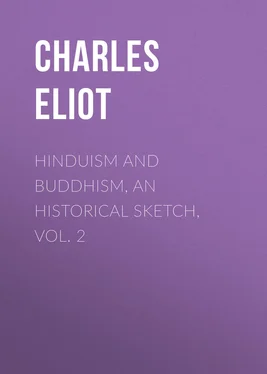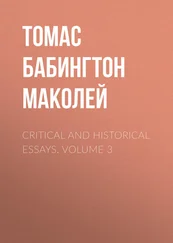Charles Eliot - Hinduism and Buddhism, An Historical Sketch, Vol. 2
Здесь есть возможность читать онлайн «Charles Eliot - Hinduism and Buddhism, An Historical Sketch, Vol. 2» — ознакомительный отрывок электронной книги совершенно бесплатно, а после прочтения отрывка купить полную версию. В некоторых случаях можно слушать аудио, скачать через торрент в формате fb2 и присутствует краткое содержание. Жанр: foreign_religion, Философия, Религиозная литература, foreign_psychology, foreign_antique, foreign_prose, на английском языке. Описание произведения, (предисловие) а так же отзывы посетителей доступны на портале библиотеки ЛибКат.
- Название:Hinduism and Buddhism, An Historical Sketch, Vol. 2
- Автор:
- Жанр:
- Год:неизвестен
- ISBN:нет данных
- Рейтинг книги:4 / 5. Голосов: 1
-
Избранное:Добавить в избранное
- Отзывы:
-
Ваша оценка:
- 80
- 1
- 2
- 3
- 4
- 5
Hinduism and Buddhism, An Historical Sketch, Vol. 2: краткое содержание, описание и аннотация
Предлагаем к чтению аннотацию, описание, краткое содержание или предисловие (зависит от того, что написал сам автор книги «Hinduism and Buddhism, An Historical Sketch, Vol. 2»). Если вы не нашли необходимую информацию о книге — напишите в комментариях, мы постараемся отыскать её.
Hinduism and Buddhism, An Historical Sketch, Vol. 2 — читать онлайн ознакомительный отрывок
Ниже представлен текст книги, разбитый по страницам. Система сохранения места последней прочитанной страницы, позволяет с удобством читать онлайн бесплатно книгу «Hinduism and Buddhism, An Historical Sketch, Vol. 2», без необходимости каждый раз заново искать на чём Вы остановились. Поставьте закладку, и сможете в любой момент перейти на страницу, на которой закончили чтение.
Интервал:
Закладка:
Both schools attach importance to the distinction between relative and absolute knowledge. Relative knowledge is true for human beings living in the world: that is to say it is not more false than the world of appearance in which they live. The Hinayanist doctrines are true in this sense. Absolute knowledge rises above the world of appearance and is altogether true but difficult to express in words. The Yogâcâra makes three divisions, dividing the inferior knowledge into two. It distinguishes first illusory knowledge ( parikalpita ) such as mistaking a piece of rope for a snake or belief in the existence of individual souls. Secondly knowledge which depends on the relations of things ( paratantra ) and which though not absolutely wrong is necessarily limited, such as belief in the real existence of ropes and snakes. And thirdly absolute knowledge ( parinishpanna ), which understands all things as the manifestation of an underlying principle. The Mâdhyamikas more simply divide knowledge into samvṛiti-satya and paramârtha-satya , that is the truth of every-day life and transcendental truth. The world and ordinary religion with its doctrines and injunctions about good works are real and true as samvṛiti but in absolute truth ( paramârtham ) we attain Nirvana and then the world with its human Buddhas and its gods exists no more. The word śûnyam or śûnyatâ , that is void , is often used as the equivalent of paramârtham . Void must be understood as meaning not an abyss of nothingness but that which is found to be devoid of all the attributes which we try to ascribe to it. The world of ordinary experience is not void, for a great number of statements can be made about it, but absolute truth is void, because nothing whatever can be predicated of it. Yet even this colourless designation is not perfectly accurate, 102 102 Nâgârjuna says Śûnyam iti na vaktavyam aśûnyam iti va bhavet Ubhayam nobhayam ceti prâjñâptyartham tu kathyate, "It cannot be called void or not void or both or neither but in order to somehow indicate it, it is called Śûnyatâ."
because neither being nor not-being can be predicated of absolute truth. It is for this reason, namely that they admit neither being nor not-being but something between the two, that the followers of Nâgârjuna are known as the Mâdhyamikas or school of the middle doctrine, though the European reader is tempted to say that their theories are extreme to the point of being a reductio ad absurdum of the whole system. Yet though much of their logic seems late and useless sophistry, its affinity to early Buddhism cannot be denied. The fourfold proposition that the answer to certain questions cannot be any of the statements "is," "is not," "both is and is not," "neither is nor is not," is part of the earliest known stratum of Buddhism. The Buddha himself is represented as saying 103 103 Sam. Nik. XXII. 90. 16.
that most people hold either to a belief in being or to a belief in not being. But neither belief is possible for one who considers the question with full knowledge. "That things have being is one extreme: that things have no being is the other extreme. These extremes have been avoided by the Tathâgata and it is a middle doctrine that he teaches," namely, dependent origination as explained in the chain of twelve links. The Mâdhyamika theory that objects have no absolute and independent existence but appear to exist in virtue of their relations is a restatement of this ancient dictum.
The Mahayanist doctors find an ethical meaning in their negations. If things possessed svabhâva , real, absolute, self-determined existence, then the four truths and especially the cessation of suffering and attainment of sanctity would be impossible. For if things were due not to causation but to their own self-determining nature (and the Hindus always seem to understand real existence in this sense) cessation of evil and attainment of the good would be alike impossible: the four Noble Truths imply a world which is in a state of constant becoming, that is a world which is not really existent.
But for all that the doctrine of śûnyatâ as stated in the Mâdhyamika aphorisms ascribed to Nâgârjuna leaves an impression of audacious and ingenious sophistry. After laying down that every object in the world exists only in relation to every other object and has no self-existence, the treatise proceeds to prove that rest and motion are alike impossible. We speak about the path along which we are passing but there is really no such thing, for if we divide the path accurately, it always proves separable into the part which has been passed over and the part which will be passed over. There is no part which is being passed over. This of course amounts to a denial of the existence of present time. Time consists of past and future separated by an indivisible and immeasurable instant. The minimum of time which has any meaning for us implies a change, and two elements, a former and a subsequent. The present minute or the present hour are fallacious expressions. 104 104 Gotama, the founder of the Nyâya philosophy, also admitted the force of the arguments against the existence of present time but regarded them as a reductio ad absurdum . Shadworth Hodgson in his Philosophy of Reflection , vol. I. p. 253 also treats of the question.
Therefore no one ever is passing along a path. Again you cannot logically say that the passer is passing, for the sentence is redundant: the verb adds nothing to the noun and vice versa : but on the other hand you clearly cannot say that the non-passer is passing. Again if you say that the passer and the passing are identical, you overlook the distinction between the agent and the act and both become unreal. But you cannot maintain that the passer is different from the passing, for a passer as distinct from passing and passing as distinct from a passer have no meaning. "But how can two entities exist at all, if they exist neither as identical with one another nor as different from one another?"
The above, though much abridged, gives an idea of the logic of these sûtras. They proceed to show that all manner of things, such as the five skandhas, the elements, contact, attachment, fire and fuel, origination, continuation and extinction have no real existence. Similar reasoning is then applied to religious topics: the world of transmigration as well as bondage and liberation are declared non-existent. In reality no soul is in bondage and none is released. 105 105 The Sânkhya philosophy makes a similar statement, though for different reasons.
Similarly Karma, the Buddha himself, the four truths, Nirvana and the twelve links in the chain of causation are all unreal. This is not a declaration of scepticism. It means that the Buddha as a human or celestial being and Nirvana as a state attainable in this world are conceivable only in connection with this world and therefore, like the world, unreal. No religious idea can enter into the unreal (that is the practical) life of the world unless it is itself unreal. This sounds a topsy turvy argument but it is really the same as the Advaita doctrine. The Vedânta is on the one hand a scheme of salvation for liberating souls which transmigrate unceasingly in a world ruled by a personal God. But when true knowledge is attained, the soul sees that it is identical with the Highest Brahman and that souls which are in bondage and God who rules the world are illusions like the world itself. But the Advaita has at least a verbal superiority over the Mâdhyamika philosophy, for in its terminology Brahman is the real and the existent contrasted with the world of illusion. The result of giving to what the Advaita calls the real and existent the name of śûnyatâ or void is disconcerting. To say that everything without distinction is non-existent is much the same as saying that everything is existent. It only means that a wrong sense is habitually given to the word exist, as if it meant to be self-contained and without relation to other objects. Unless we can make a verbal contrast and assert that there is something which does exist, it seems futile to insist on the unreality of the world. Yet this mode of thought is not confined to text-books on logic. It invades the scriptures, and appears (for instance) in the Diamond Cutter 106 106 Vajracchedikâ. See S.B.E. vol. XLIX. It was translated into Chinese by Kumârajîva (384-417 A.D.).
which is still one of the most venerated books of devotion in China and Japan. In this work the Buddha explains that a Bodhisattva must resolve to deliver all living beings and yet must understand that after he has thus delivered innumerable beings, no one has been delivered. And why? Because no one is to be called a Bodhisattva for whom there exists the idea of a being, or person. Similarly a saint does not think that he is a saint, for if he did so think, he would believe in a self, and a person. There occur continually in this work phrases cast in the following form: "what was preached as a store of merit, that was preached as no store of merit 107 107 Or in other repetitions of the same formula, beings, ideas, good things, signs, etc., etc.
by the Tathâgata and therefore it is called a store of merit. If there existed a store of merit, the Tathâgata would not have preached a store of merit." That is to say, if I understand this dark language rightly, accumulated merit is part of the world of illusion which we live in and by speaking of it as he did the Buddha implied that it, like everything else in the world, is really non-existent. Did it belong to the sphere of absolute truth, he would not have spoken of it as if it were one of the things commonly but erroneously supposed to exist. Finally we are told of the highest knowledge "Even the smallest thing is not known or perceived there; therefore it is called the highest perfect knowledge." That is to say perfect knowledge transcends all distinctions; it recognises the illusory nature of all individuality and the truth of sameness, the never-changing one behind the ever-changing many. In this sense it is said to perceive nothing and know nothing.
Интервал:
Закладка:
Похожие книги на «Hinduism and Buddhism, An Historical Sketch, Vol. 2»
Представляем Вашему вниманию похожие книги на «Hinduism and Buddhism, An Historical Sketch, Vol. 2» списком для выбора. Мы отобрали схожую по названию и смыслу литературу в надежде предоставить читателям больше вариантов отыскать новые, интересные, ещё непрочитанные произведения.
Обсуждение, отзывы о книге «Hinduism and Buddhism, An Historical Sketch, Vol. 2» и просто собственные мнения читателей. Оставьте ваши комментарии, напишите, что Вы думаете о произведении, его смысле или главных героях. Укажите что конкретно понравилось, а что нет, и почему Вы так считаете.












